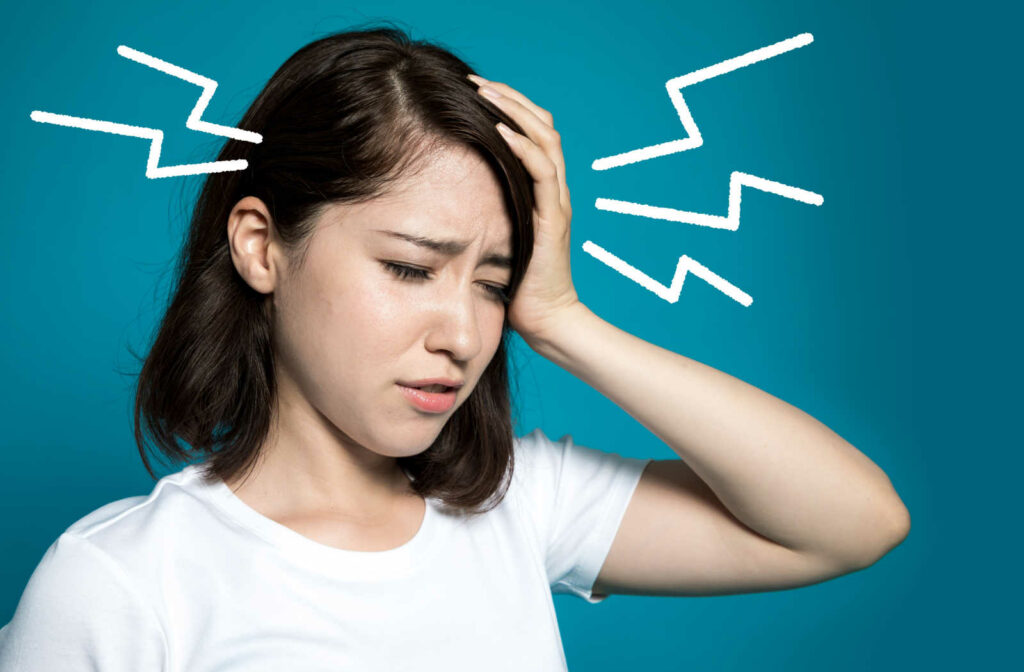Millions of Americans suffer from dry eyes—some temporarily during allergy season, while others deal with the symptoms all year long. Dry eyes don’t result in permanent damage in most cases. But they can be symptoms of underlying eye disease. So, ongoing dry eyes are a good reason to see the eye doctor for an exam.
Even if dry eyes don’t necessarily result in significant damage, they can lead to other uncomfortable symptoms, such as headaches, blurry vision, infection, or abrasions on the cornea.
Sometimes, at-home treatment is adequate. Below, we’ll explore a few potential remedies to prevent or minimize these uncomfortable symptoms.
What Is Dry Eye?
Dry eye disease is the most common cause of dry eyes, and it’s typically referred to as dry eye. There are two major subtypes of dry eye: evaporative and aqueous deficiency. Each subtype is characterized by its root cause.
Evaporative dry eye is caused by a lack of oil in the tear film. Without this oil, your tears evaporate too quickly. This leaves the eye without adequate lubrication. On the other hand, aqueous deficiency dry eye is an issue with the amount of tears your body produces. The eye simply doesn’t produce enough tears to protect and lubricate the eye properly.
Dry Eyes And Headaches: How Are They Linked
Several years ago, a study revealed a connection between migraine headaches and dry eye. It found that out of nearly 80,000 participants, 20% of them had dry eye disease along with their migraine diagnosis.
Another connection that dry eye and headaches share is some of their symptoms. For example, light sensitivity, discomfort while looking at digital screens, and inflammation are potential symptoms of both dry eye disease and migraines.
Potential Dry Eye Complications
If dry eye is left untreated, complications or vision issues can occur.
Blurry Vision
There are eye conditions that may cause blurry vision. But if you have dry eye disease and get blurry vision, dry eye may be the culprit. In addition to lubricating and protecting your eyes, your tears also help focus light for clear vision.
Without a proper tear film, your eyes may have trouble focusing light, especially in a low-light setting. This can cause blurry, uncomfortable vision.
Infection & Damage
Your tears form a vital part of the eye’s defense system. Throughout the day, our eyes come into contact with airborne microscopic contaminants. The tear film helps trap and prevent these from getting into the eye.
Additionally, lubrication isn’t only for comfort. It also prevents the eye from sustaining abrasion damage by rubbing against the eyelids.
Discomfort
One of the more common symptoms of dry eyes is an uncomfortable feeling—whether it’s a gritty feeling like something is in your eye, burning, or stinging, discomfort typically accompanies dry eye.
When dealing with the discomfort of dry eye, it’s recommended to avoid rubbing your eyes. It may provide temporary relief, but you risk scratching your eye.
Dry Eye Treatments & Remedy Options
If your dry eyes cause symptoms like headaches or blurry vision, there may be options for relief; treatments may include:
- Medication: Your eye doctor can prescribe you various medications—oral, nasal and topical. Some stimulate tear production, and some help reduce inflammation. If an infection is the underlying cause of the dryness, the optometrist may prescribe antibiotic eye drops.
- Meibomian gland expression: One of the leading causes of evaporative dry eye is meibomian gland dysfunction (MGD), which results in an inadequate amount of oil in the tear film. Sometimes the manual expression of these glands can help unclog them and stimulate their normal function.
- Intense Pulsed Light (IPL) Therapy: Another option that can help with evaporative dry eye from MGD is IPL. The eye doctor applies a particular frequency of intense pulses of light to the area around the eyes. These pulses of light can help stimulate and unclog the meibomian glands.
- Eye drops: Lubricating eye drops are typically the first line of treatment in most cases of dry eye. For chronic cases of dry eye, ensure you use a preservative-free eye drop. If standard lubricating eye drops aren’t providing relief, serum tears may be an option. These eye drops are typically more effective because they’re made from your blood, and contain specific biological nutrients and immunoprotective proteins.
- Specialty contact lenses: Contact lenses are usually not an option for someone who has dry eyes. However, there are some specialty contact lenses, like scleral lenses, that someone with dry eye may be able to wear.
- Zest Treatment: Zocular Eyelid System Treatment is an innovative and non-surgical method of treating eye conditions like dry eye, clogged meibomian glands and blepharitis. This technology uses Zocusome micelle which employs a natural, plant-based formulation to cleanse the eyelid margin gently and unclog oil glands.
Discuss Your Symptoms With Your Eye Doctor
Over-the-counter eye drops can provide short-term relief from dry eye symptoms. But if you’re looking to get to the root cause of your dry eye and get long-lasting relief, we’re here to help.
Reach out to our office—the professional team at Bluebird Vision + Wellness is here to answer your questions. We can’t wait to see you!



